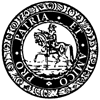St Martin-in-the-Fields
The church of St Martin-in-the-Fields stands in a prominent position within Trafalgar Square. There were at one time five churches dedicated to St Martin in the square mile of the City of London, so there are several contenders for the five farthings of the nursery rhyme which was probably written in the mid-18th century. Accounts of bells at St Martin-in-the-Fields date back 500 years, so its claim is probably valid.

Westminster
The first ring of 12 bells dates back to May 1727. The following March there was a ringing match between the Society of College Youths and the Society of London Scholars. On the 14th the Scholars set a record by ringing the longest 12 bell peal - 6000 Grandsire Cinques. The next day their rivals rang 6134 in the same method. There is no account of what the parishioners thought of this contest!
In the 1750s the Society of Union Scholars, who had rung at St Martins since 1736, disbanded and a split in the College Youths between the juniors and seniors resulted in the senior branch making the church their home. In 1788 they disbanded, and the juniors came to St Martins. They stayed until 1849 when they moved to Southwark. The vacancy was filled shortly afterwards by the Society of Royal Cumberland Youths. It has been our headquarters ever since – for over 150 years.
The bells of 1727 remained at St Martins for many years (although the trebles were recast in 1758 and the tenor was replaced in 1726 owing to it crashing to the floor due to a broken gudgeon). Despite a re–hang in 1912, they were difficult to ring, partly due to being hung too high. In 1984, the decision was taken to replace the bells with a new ring and planning began. A new home was found for the old bells when the Australia and New Zealand Association of Bell Ringers asked if they might mark the Australian Bicentenary in 1988 by transporting the bells to the University of Western Australia in Perth, and hanging them in a purpose built tower. Renison Goldfields Consolidated Ltd sent to London 12 tonnes of Australian copper and tin to provide the new bells and fund raising by the Cumberlands began. By June 1988 the new bells, cast by Whitechapel Bell Foundry, were ready.
